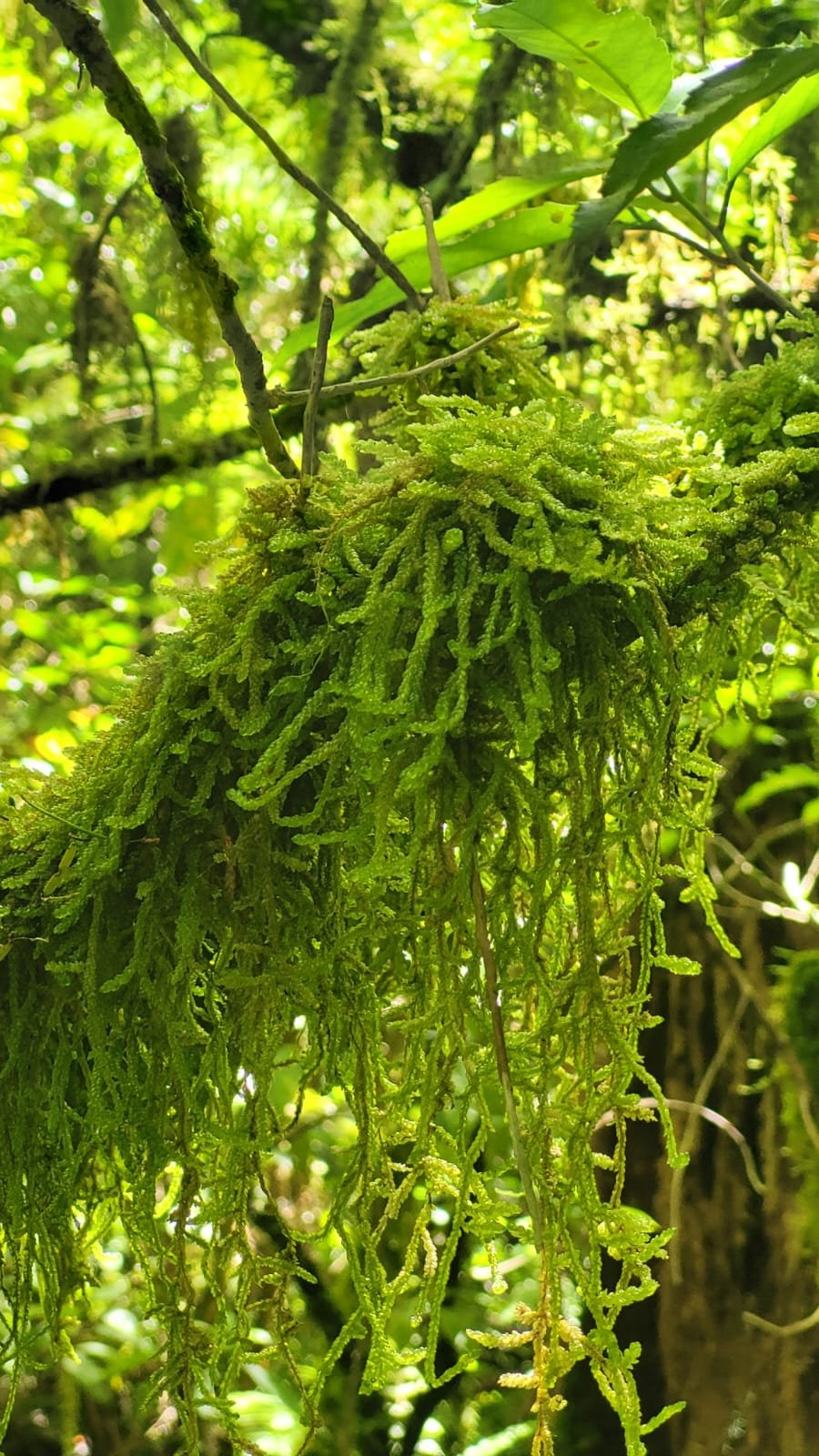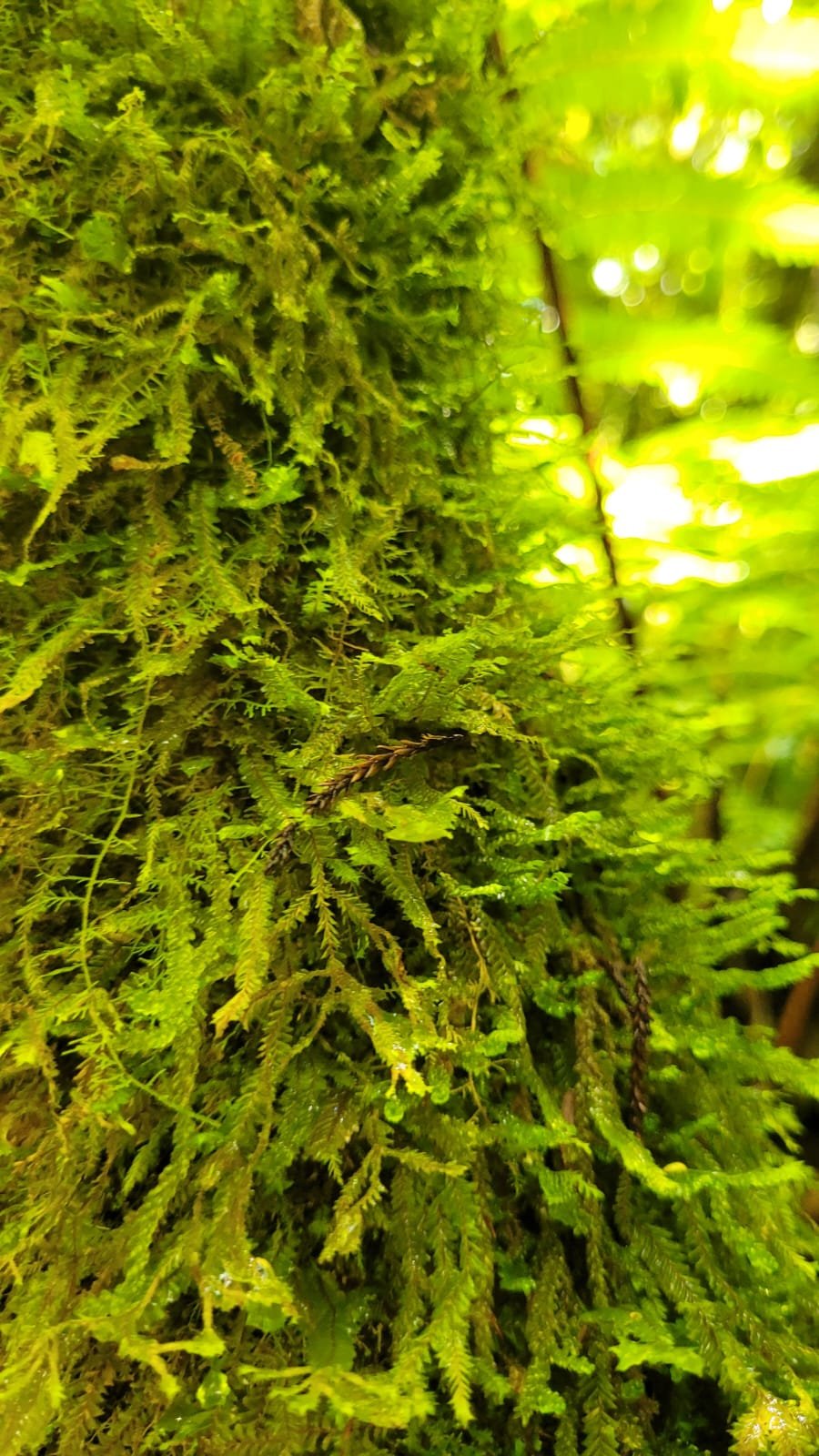The Canopy At Your Feet — Written by Te Korowai o Waiheke Team Member
📸 Captured by Charlie Thomas
After days of torrential rain, stepping outside into the bush is so rewarding. The track slides beneath my boots, slick with mud a loose gravel. I walk slowly so I don’t fall flat on my face. This has its benefits, by taking the time to watch each step, I start to notice the things at ground level I might normally miss.
With my eyes usually trained on the canopy above me, I start to notice the canopy at my feet. Umbrella moss with rain drops collecting like little bird baths, tiny plants sprouting and springtails crawling around beneath them. The green carpet crawls its way up mahoe and fallen rimu, while hanging clubmoss flows lazily over the branches as it reaches back towards the ground. Water drips from the end of each strand, feeding moisture back to itself in the undergrowth.
Mosses, or pūkoho in te reo, are one of the most robust species in the world, having survived 450 million years on the planet, and existing on every continent. They have adapted to grow in a range of changing climates, continuing to thrive in the inhospitable places that most species can’t. From as low as -272 degrees celcius, to as high as 100 degrees celcius, some moss species are still able to survive. These incredible little plants play a vital role in ecosystems by acting as sponges, soaking up rainfall to help maintain moisture in the surrounding soil. This is key to helping new plants grow, especially in places that have been disturbed by humans or even affected by forest fires. Here in Aotearoa, we are lucky have the largest species of moss in the world! Dawsonia superba, or giant moss, can grow to a height of 60cms. Their tiny spores are spread by rain drops, so I can’t help but wonder if the passing weather has encouraged any new moss pēpi to settle into the soil.
I don’t spot any giant moss as I shuffle along the path this time, but dewy patches of sphagnum line the path pillows. The dense plant holds the shape of my fingerprints as I gently press down on it. I can never resist touching all the moss I see, each one is a different texture; springy, soft, feathered, and usually wet. The forest floor glows with a soft, emerald haze. The spores of the many species of pūkoho reach up, and the gentle evening light pushes through them. It is green from floor to ceiling, with enormous rimu and climbing rata towering above me, too. It is amazing to see how such large trees are helped to survive by counterparts who are so minute in comparison. I trek back out of the bush and onto the main road, the noise of cars and warm tarmac is very unwelcome. I think I would be happier in a world covered in moss, but it’s fine, as I always know where I can find one.
— Written and captured by Te Korowai o Waiheke Team Member, Charlie Thomas



